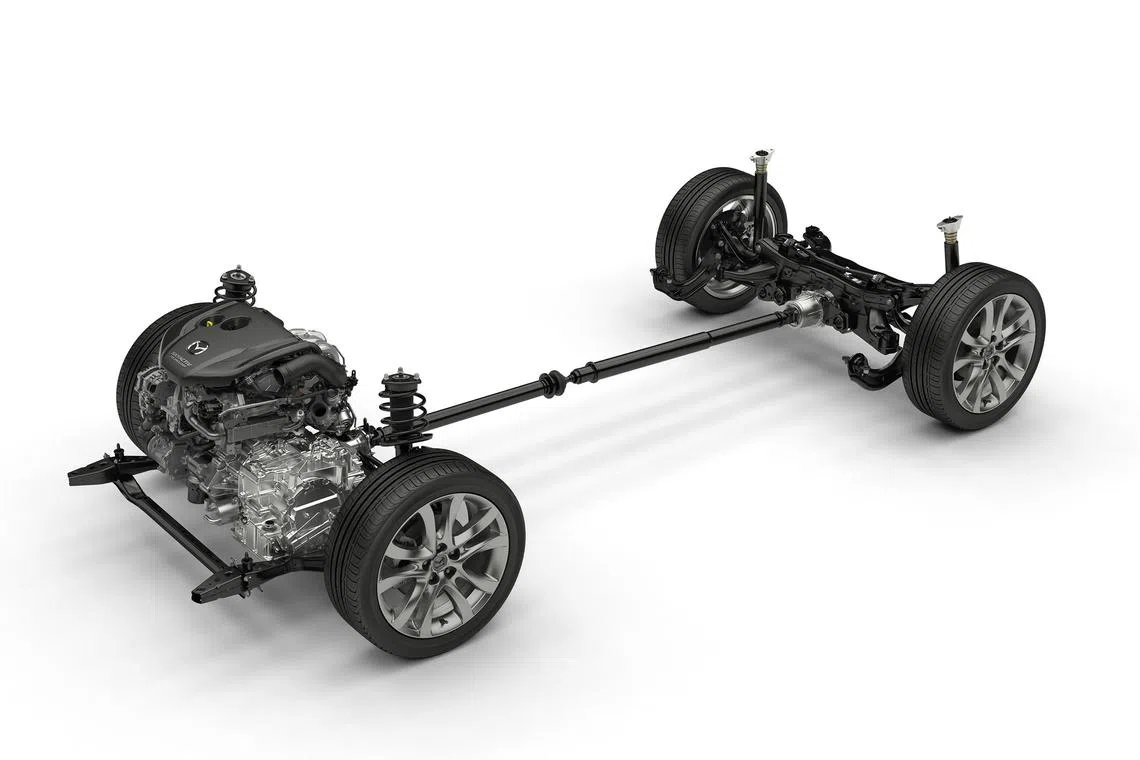Torque Shop: Electric all-wheel drive versus others
Sign up now: Get ST's newsletters delivered to your inbox

Traction: The four-wheel-drive system on internal combustion engine cars typically has a mechanical link to send drive to the two wheel axles.
PHOTO: MAZDA
Follow topic:
Is the all-wheel drivetrain in an EV different from that in a car with an internal combustion engine or one with hybrid power?
The four-wheel-drive (4WD) system in an electric vehicle (EV) is very different from the drivetrain in any car powered by an internal combustion engine (ICE).
In the traditional 4WD system found in ICEs, there are conventional differentials in the front and rear axles to distribute torque to the left and right wheels.
Power is transmitted directly from the gearbox to the differential of the first pair of wheels – which could be the front or rear, depending on engine location – and then via a transfer unit to a shaft that connects to the second differential in the other axle.
In many cases, there would be some type of coupling along the transfer shaft, which is designed to distribute torque variably between front and rear. There are many different designs of couplings, and some come with electronic control for faster response when slip is detected.
In a 4WD EV, an electric motor is mounted along each axle and drives the wheels directly with just one – or two in some performance models – step-down gearing. A differential is part of the set-up, to split drive left and right.
A second electric motor drives the wheels at the other axle, which is configured in almost exactly the same way. So when you see a “Dual Motor” badge on an EV, the car must be 4WD with a dedicated motor for each axle.
There are also some EVs, such as the Audi e-tron S, that have three motors. The usual configuration in this case would be a single motor in front and individual motors for each rear wheel. In such a layout, there is no need for a differential at the rear.
Of course, there are some rare vehicles such as the Mercedes EQG with one motor a wheel.
Whether dual-, triple- or quad-motor, the big difference between 4WD EVs and ICEs is that there is no gearbox and no mechanical power transmission components, such as a transfer unit or any longitudinal shaft connecting the front and rear axles.
Each wheel or pair of wheels is powered directly by an electric motor. Torque distribution is fully controlled by electronics.
A third type of 4WD is found in some hybrid cars.
Here, the internal combustion engine drives one pair of wheels, usually the front, via a conventional transmission. The wheels at the back are driven by an electric motor, so there is no mechanical connection between the two axles. Cars using this set-up include the Lexus RX350h.

